How Pula’s Amphitheatre stacks up against other Roman arenas
If you research the most famous Roman Arenas in the world you’ll usually find these four on the top of most lists: The Colosseum in Rome, the Amphitheatre of El Djem in Tunisia (where ‘Gladiator’ was filmed), the Arena in Verona…and the Amphitheatre in Pula.
We’ve been lucky enough to see 3 of the above over the last month (El Djem being the one we haven’t seen) and it’s interesting how each is different.
Before I compare them, a few notes on the Amphitheatre in Pula:
– It was built in the 1st century AD
– it could seat over 26,000 spectators
– it is the 6th largest surviving Roman arena and is considered Croatia’s best preserved Roman monument
– it is used for festivals and performances in the summer months and was even the site of 2 outdoor hockey games featuring professional hockey teams from the KHL.
.
.
Comparisons with other Arenas
Exterior: We both agree that the Colosseum in Rome is the most impressive from the outside. It’s the largest of the Roman Arenas and is massive. Lissette likens it to a huge, heavy cake. Pula is totally different – the white limestone, huge arches, and the emptiness of the interior give it an openness, a lightness, that you won’t see in other arenas. It is beautiful, but skeletal. What is left of the exterior of Verona’s Arena is not as high as either of the arenas above and is the least impressive (from the exterior) of the 3.
.
Interior: Here is where Lissette and I don’t agree. I was totally impressed by the Colosseum in Rome, especially looking down at the remains on the tunnels that used to be under the Arena floor. I could imagine the gladiators, slaves and wild animals down there. It must have been sheer terror. Lissette didn’t feel the same thing, maybe because of all the tourists. She liked the interior of the Arena in Verona where you could climb the stairs and have access to the different levels. She could imagine all the people sitting there. I’ll admit that Verona didn’t do anything for me, especially with the modern arena floor in place. There’s not much to the interior of the Amphitheatre in Pula. Much of the interior was broken down over time and used in the building of the rest of the town. But what is special is that you can get right down on the Arena floor, looking up at the few remaining rows of seats and across the Arena. You can almost image a chariot racing towards you.

.
Other factors: Both the Arena in Verona and the Amphitheatre in Pula are still in use for different festivals and performances. The Arena in Verona hosts opera (4 to 6 major productions each summer), ballet and even rock concerts. The Amphitheatre in Pula is used in the same way and has hosted Pavarotti, Bocelli and Sting among others. And as I mentioned, it’s been the site for outdoor hockey games. So they both win points for modern functionality. How amazing would it be to watch the opera in that setting? The Amphitheatre in Pula is located next to the water, you can look through the arches and see the blue of the sea. That’s pretty special
.
So there are a lot of factors in choosing which might be your favorite arena and we don’t see eye to eye:
Our favorite of the arenas:
Lissette (in order) : Verona, Pula, Rome
Me (in order): Rome, Pula, Verona
So which is your favorite?
Whatever your preference, they’re all special and worth a visit.
The town of Pula
We were a bit surprised – negatively – by Pula.
It is the largest city in Istria with a population of about 60,000 and has some impressive sites: the major one besides the Amphitheatre being the Temple of Augustus.
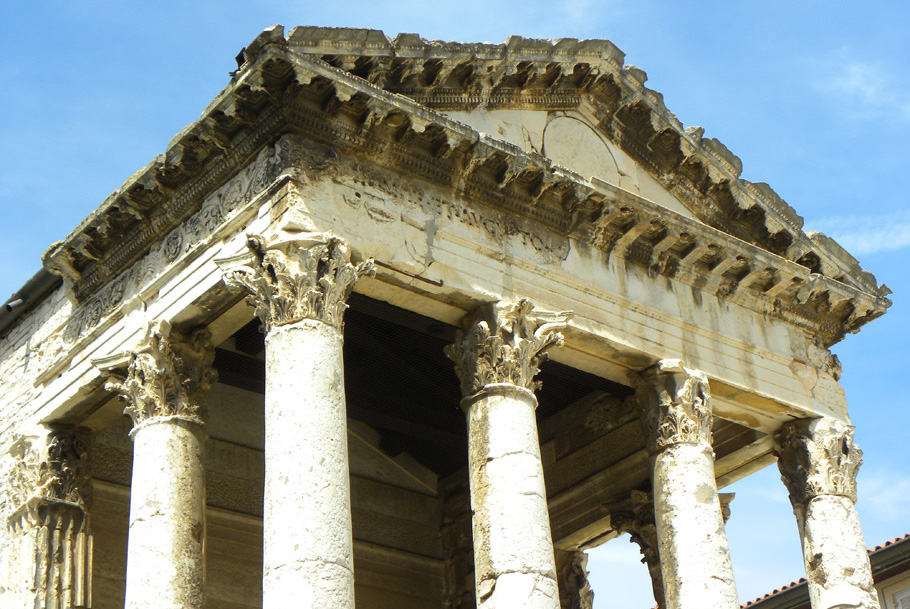
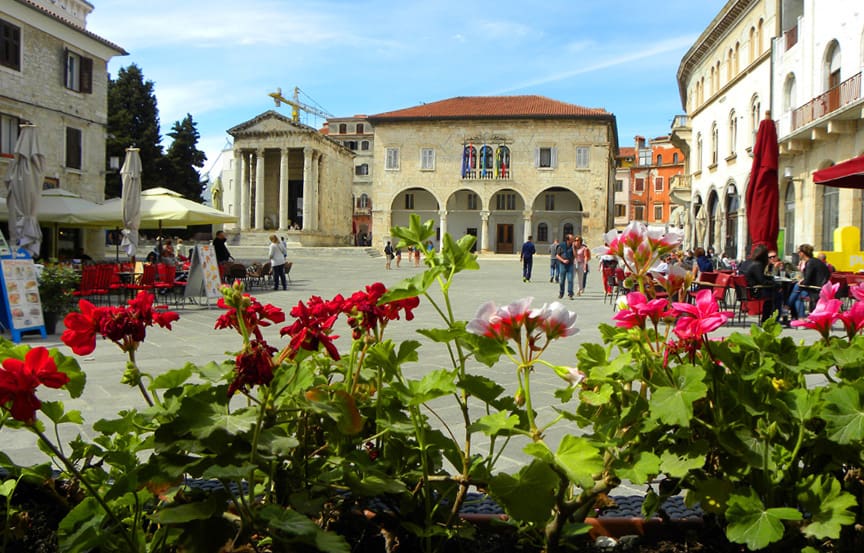
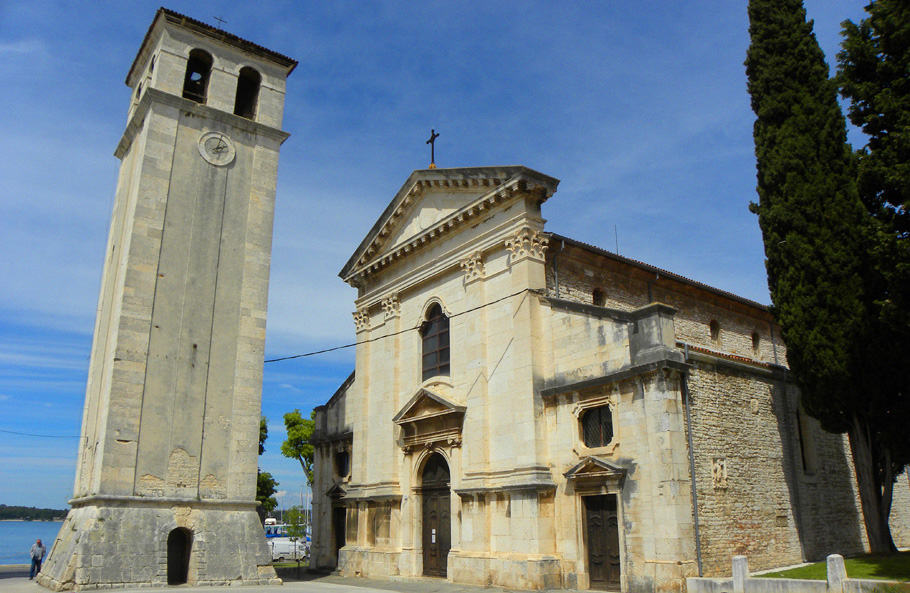
In fact Pula has numerous Roman arches and monuments as well as several churches of interest. It also has a castle overlooking the city. So there are enough sites to make Pula worth a visit. The problem is that some really ugly (modern) architecture and lots of industrial installations and port facilities that have ruined the cityscape. Overall, it is not a very attractive place. It’s a real shame.
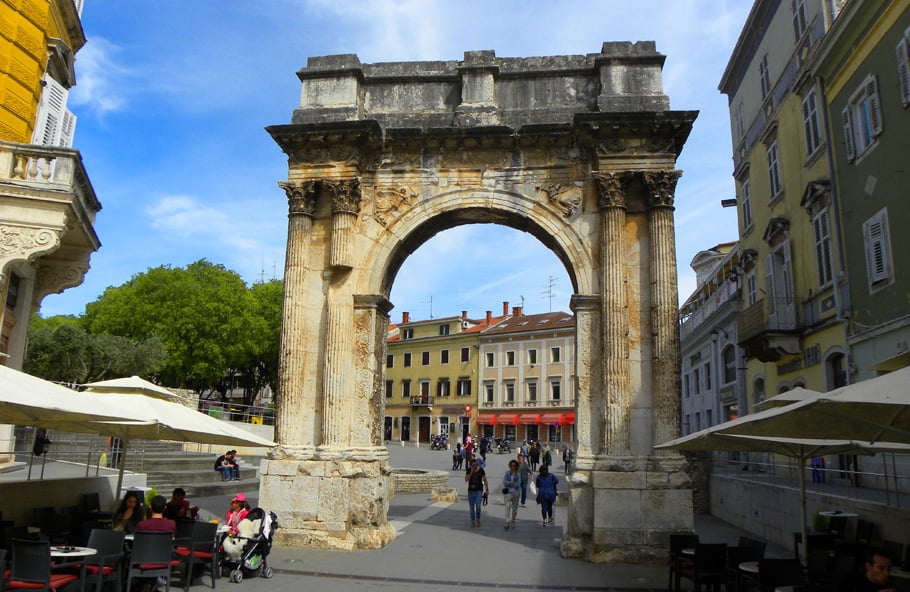
.

So our verdict on Pula? You have to come and see the Amphitheatre, it is one of Croatia’s highlights. When you’ve done that save an hour or two to walk around and see some of the other sights mentioned above. Overall, a half-day should do it.
Where to stay. I recommend using the town of Rovinj as your base while in Istria. We were there 5 weeks and saw tons during that time including the various hill towns and coastal towns such as Porec and Novigrad.
Car Rental: The best way to get around, especially in Istria where bus service is lacking. We use booking.com for car rental.
Tours: A walking tour of Pula (inexpensive and worth doing). This tour takes you to some of the most beautiful Istrian hill towns (with pickup in Pula).
Related: Bbqboy’s Guide to Croatia
Related: Exploring the highlights of Croatian Istria
Related: Porec’s UNESCO World Heritage Site – the Euphrasian Basilica
Ps. If you find our blog helpful, please consider using our links to book your flights, hotels, tours, and car rentals. Have a look at our Travel Resources page.


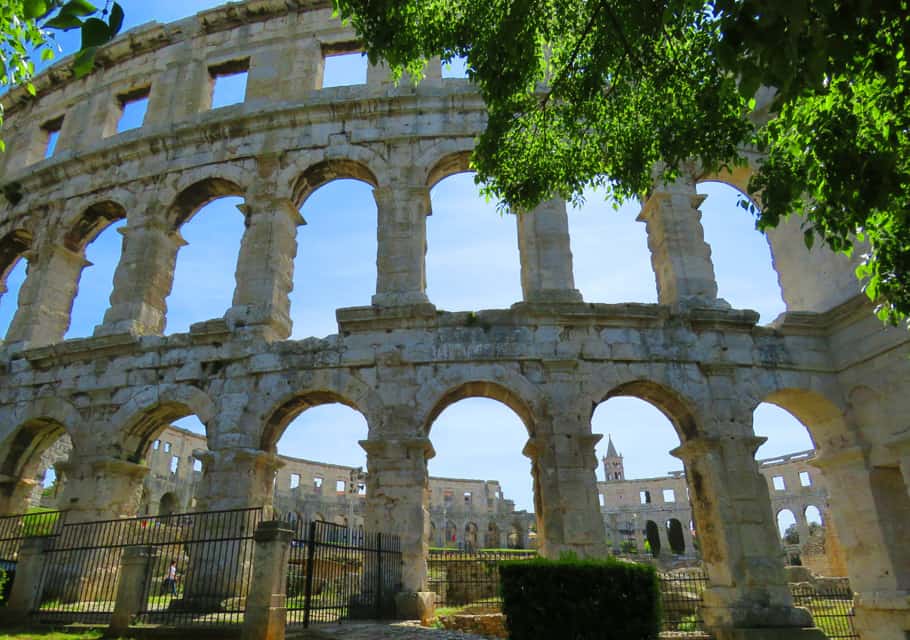
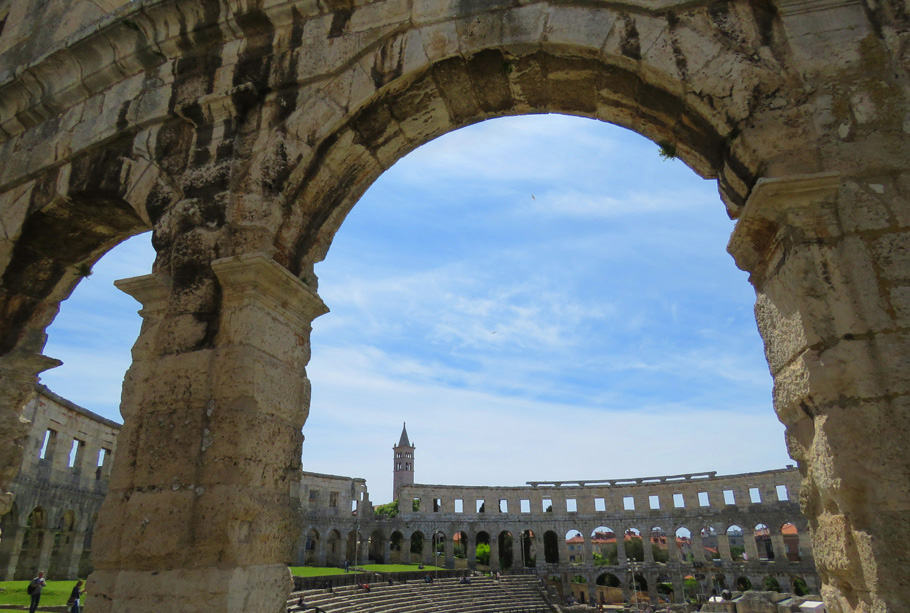
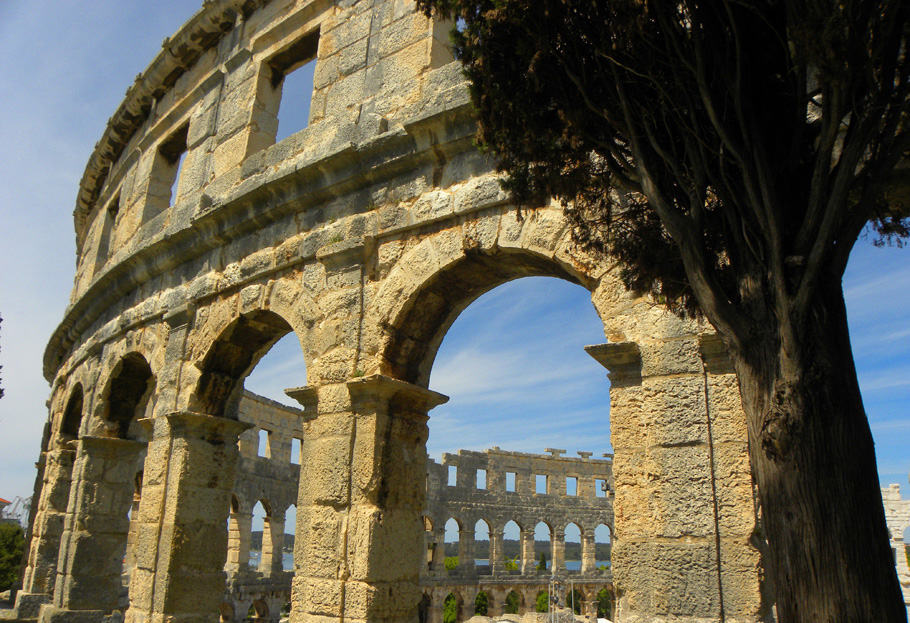

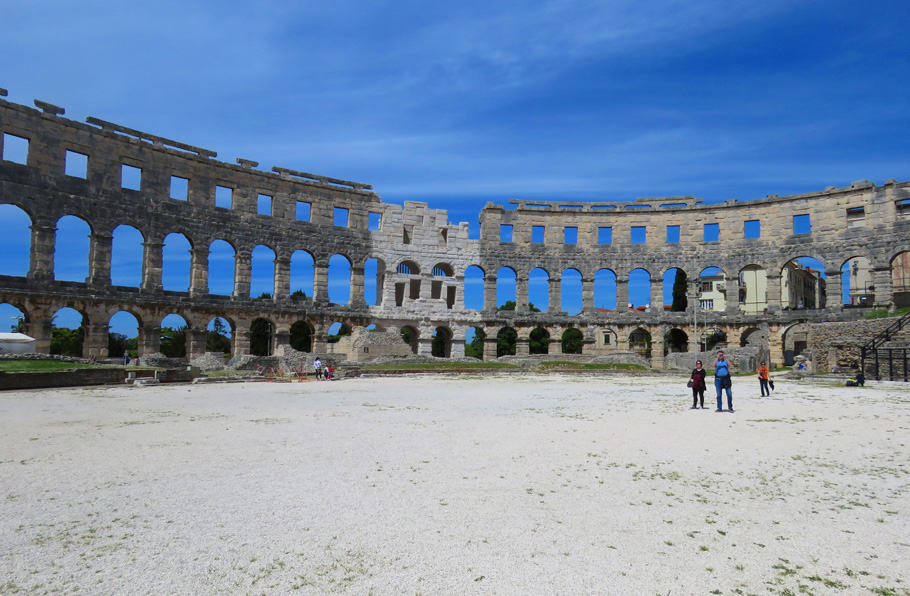

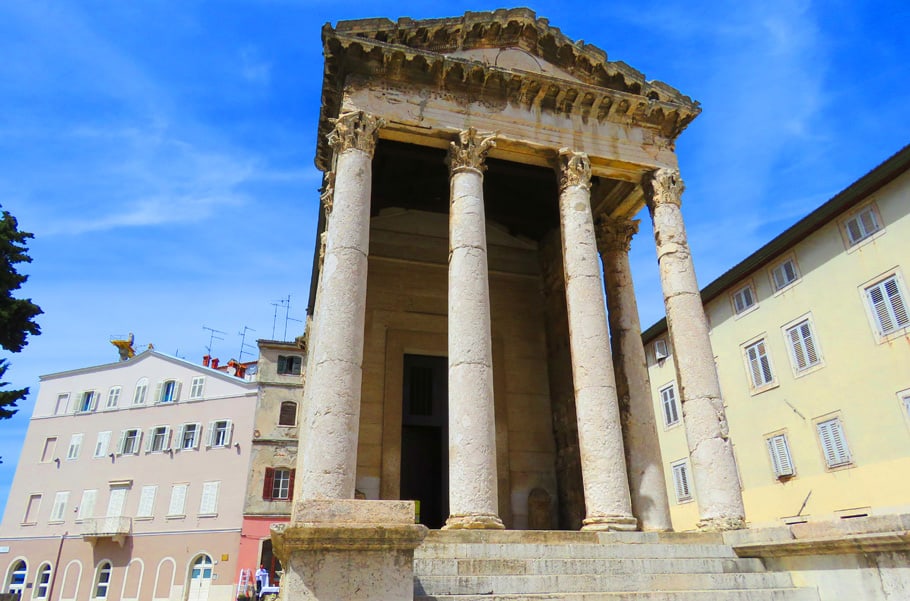


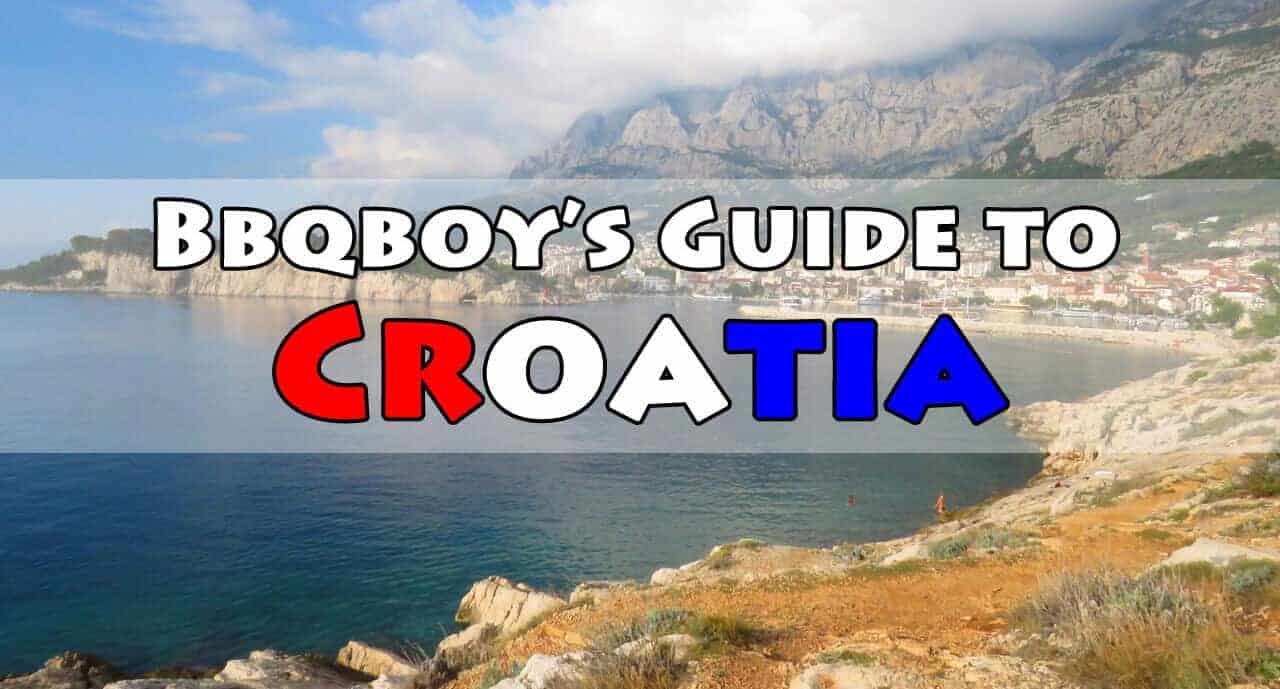
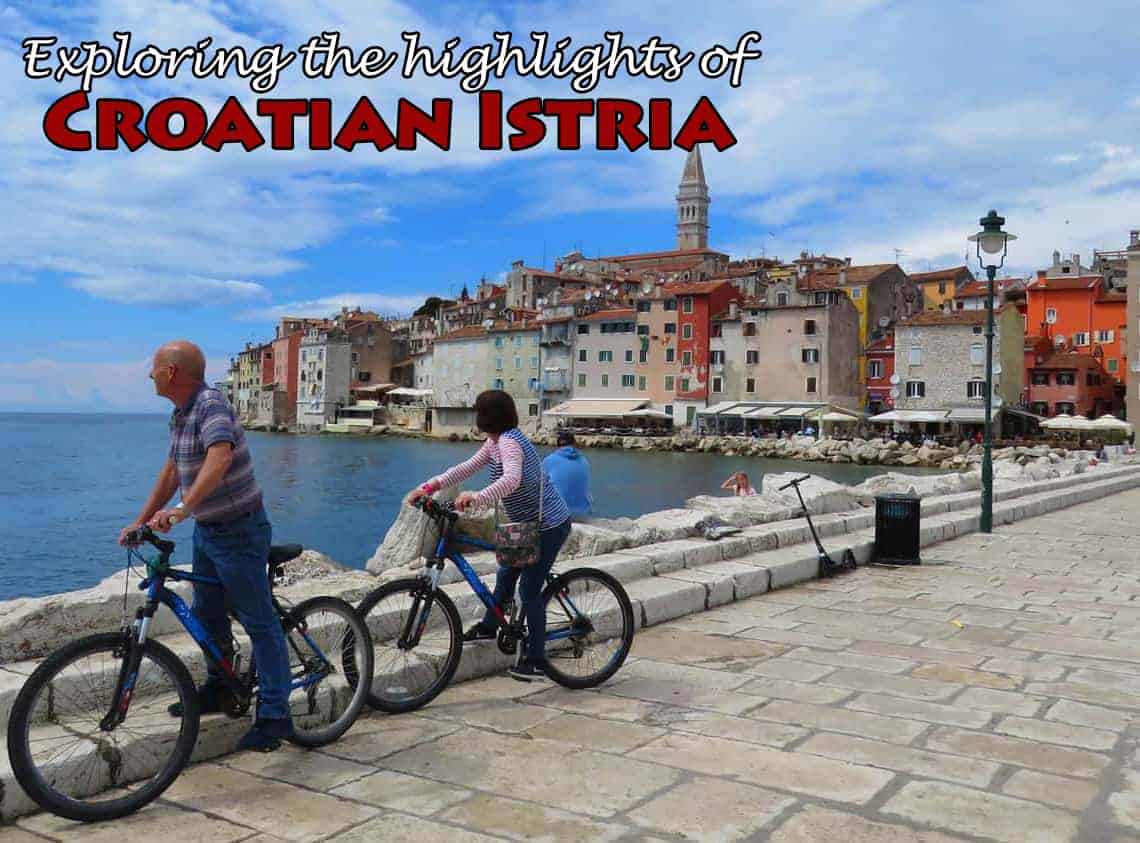
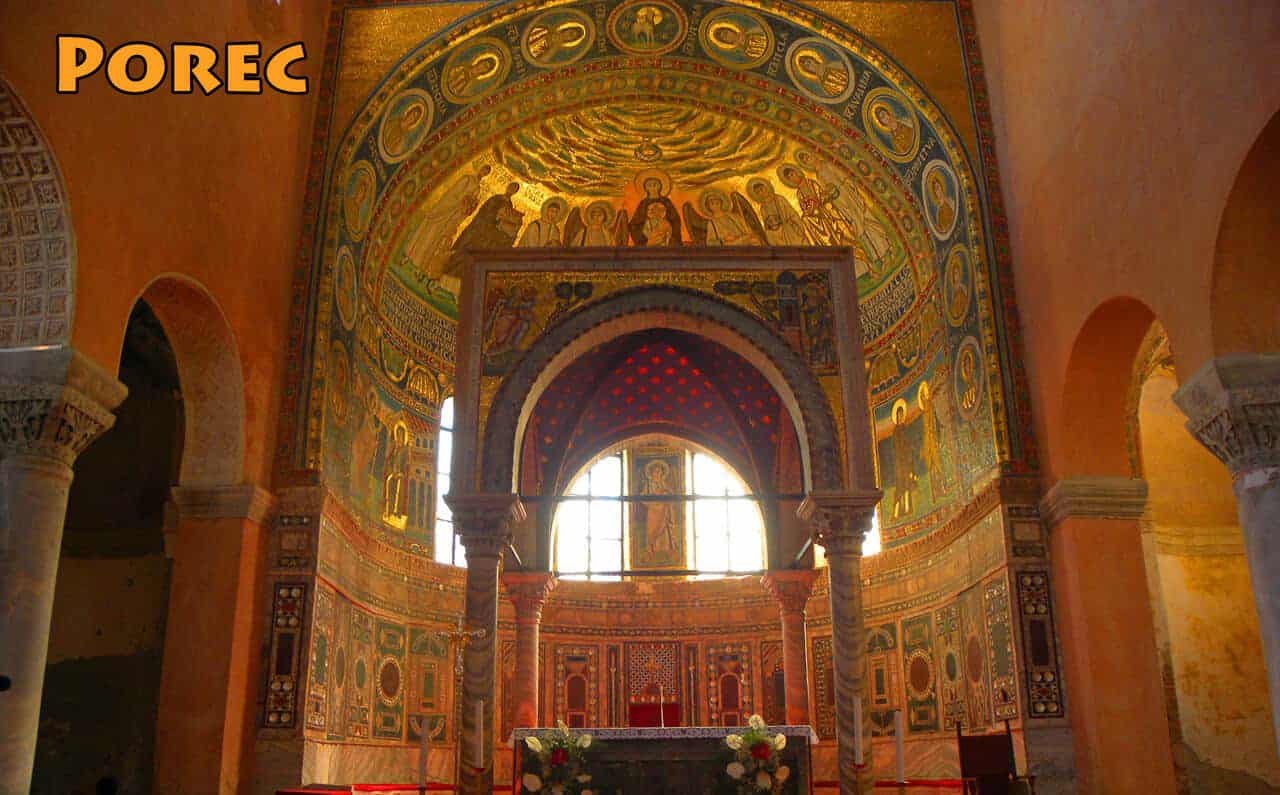
I visited all of the Colosseums and the one which impressed me the most was Pula Arena.
The Pula Arena stands as a living testament to the grandeur of ancient Roman civilization. Its enduring presence in the heart of Pula is a reminder of the rich history that continues to shape the cultural landscape of Croatia. As you stand within the ancient walls of Pula Arena, you can’t help but feel a connection to the past, where the roar of the crowd and the clash of swords once echoed through the ages. This amphitheater is not merely a structure; it is a gateway to the stories of a bygone era, inviting visitors to step back in time and immerse themselves in the grandeur of ancient Rome.
Did you know that the Pula Arena’s architectural features include a network of underground passages, once used by gladiators and animals, creating an intricate maze beneath the arena. Exploring these passages gives visitors a sense of the behind-the-scenes preparations for the grand spectacles held in the arena. I highly recommended.
And if that wasn’t enough, Pula Arena hosts educational programs for schools and universities, offering students a unique opportunity to learn about ancient history in an immersive setting. These programs aim to foster a deeper understanding of the historical and cultural context surrounding the amphitheater
the Pula Arena was the epicenter of entertainment in Pula. Gladiatorial combat, animal hunts, and mock sea battles were among the captivating events that drew crowds from all walks of life.
Over the centuries, the amphitheater has weathered earthquakes and various historical upheavals. In recent times, meticulous restoration efforts have ensured that this ancient marvel stands proudly, offering a glimpse into the past for generations to come.
While the Pula Arena no longer hosts gladiator battles, it has found new life as a venue for cultural events and performances. The arena’s acoustics make it an ideal setting for concerts, operas, and film festivals with many famous stars and celebrities visiting this remarkable gem.
In my opinion, the stunning Arena in Pula is one of the most magical sights in all of Croatia. This three-story (on its largest side) Roman amphitheatre is the sixth-largest amphitheatre in the world but – with all four sides intact – it is the best-preserved amphitheatre. which is impressive to say the least.
Another interesting fact for those of you who was wondering why was the floor covered in sand? Well, Arena is named after the Latin word for sand (harena) which is what the floor of the central part would have been covered in. Its external walls are made from limestone.
Perhaps most famously, the Arena is used as a venue during the Pula Film Festival which takes place every July. There are also numerous concerts held in the Arena in the summer. For example, in 2024, Dua Lipa, Avril Lavigne, Simple Minds, Lenny Kravitz and Duran Duran will all be performing there. Previous performers over the years have included Sting, Elton John, The Foo Fighters and Luciano Pavarotti. One-off sporting events are also sometimes held here.
For the best panoramic views head to Fortress Kastel (Pula Castle).
Built on top of a hill in the old town, the Pula Castle has a great vantage point for travelers to explore the city views and rich history that lies within the walls.
Directly under Fortress Kastel, there is a series of tunnels that were used as a bomb shelter during the First World War.
Constructed by the Austro-Hungarian empire, these tunnels have 4 entrances that link the city into this underground 2.5 miles of tunnels. Today the tunnels host signs walking you through the history of this underground world, and occasionally there are some other events held inside!
Pula, Croatia is a must-visit for anyone visiting the coastal country on the Adriatic. The charming culture, cobble-stone streets, and Roman architecture leave you in awe. Not the mention the aqua-blue water with hidden gems tucked along the coast!
Pula is a must-see location, leaving the only question; what will you do first?!
And if you thought, Italy has the best Olive Oil in the world you were wrong.
Istria is the best olive growing region in the world for the eighth year in a row. In the fifteenth edition of the prestigious guide Flos Olei, known as the bible for extra virgin oils in the world, Istria has once again reached the top and is the best in the world in terms of the number of olive groves included
Istria is the best olive growing region in the world for the eighth year in a row, yes you read it correctly. In the fifteenth edition of the prestigious guide Flos Olei, known as the bible for extra virgin oils in the world, Istria has once again reached the top and is the best in the world in terms of the number of olive groves included.
So if you’re looking to sample some of the best olive oil in the world and immerse yourself in the culture and natural beauty of the Mediterranean, a trip to Croatia is a must. Whether you’re a foodie looking to explore the country’s rich culinary traditions or a nature lover seeking out stunning landscapes and outdoor adventures, there is something for everyone in this beautiful and diverse country.
I find it crazy incredible how these ancient – and massive – structures were built and have stood the test of time for centuries. The builders were way ahead of their time. We haven’t seen any of the above mentioned amphitheaters but we did visit one in Arles, France, which which left us more than impressed. It was built to seat 20,000 spectators and it is still used today for bull fighting. Not keen on the idea of bull fighting but while self-touring the amphitheater our imaginations ran wild with what may have taken place in such a venue. Have you been to Arles? Highly recommend it if you find yourself in the south of France. For that matter, highly recommend visiting the south of France! 🙂
Haven’t been to Arles but have seen photos. One day we’ll get to that area! Yes, I also find the history incredibly impressive.
We visited Pula on a Croatia cruise – and agree with you. The town itself doesn’t have to much to offer for visitors apart from its Roman Amphitheatre (that’s all we saw on that cruise stop). But our tour guide brought ancient Roman history to life with stories of gladiators and lions, so it was a worthwhile visit from that point of view :-). In terms of enjoying a visit to a lovely medieval Croatian town, Trogir, Korcula, etc. are much more picturesque and what you imagine Croatia to be.
Oh yes, the Amphitheatre is worth the trip to Pula alone. And Pula is ok, I just don’t want people to think it’s a place to base yourself for a few days – it’s not. A half day, at most a full day – then get out for Rovinj or Porec which are much more suitable as places to stay overnight.
I think it’s one of those things people never agree on, which is the ‘best’. You know I wasn’t keen on Rome, mainly thanks to huge expectations, and whilst Verona feels a bit more sterile thanks to the staging, it at least is still being used today for entertainment, which I feel means it’s almost come full circle and is good to be practical as well as just something to gawp at. Not been to Pula, but we loved El Djem. It was a bit more ‘crumbly’ and we really could picture the history that went on there whilst clambering over all the stones. Plus, you can get down underneath all the passages and see what went on behind the scenes. You should go there someday!
Ah, someone who’s been to El Djem!! I imagine not too many tourists there, especially after the terrorist events last year. Thanks for the feedback Heather.
Interesting take on Pula. We liked Pula, but spent just a little more than a half-day exploring it. It isn’t picturesque, like Rovinj or even Porec, but I almost liked the grittiness of it. It’s like this industrial, working city and then, oh wait, there’s a huge amphitheater that is 2000-years-old just right over there. The contrast was fascinating. That being said, it isn’t necessarily the city I would chose as my homebase for the region (mainly, because if I’m that close to Rovinj, there’s no way I’m staying anywhere else! lol!).
Thanks Sarah. No, I certainly wouldn’t make it a base. As I said and you confirmed, a half day is just fine.
time to build one somewhere down there road here in Melbourne!